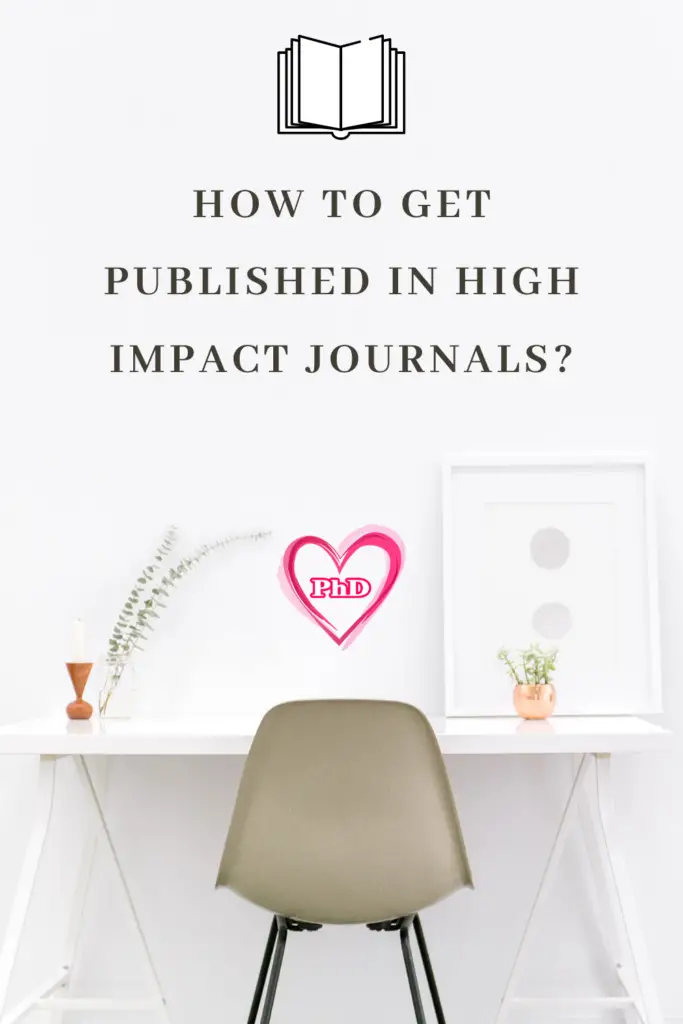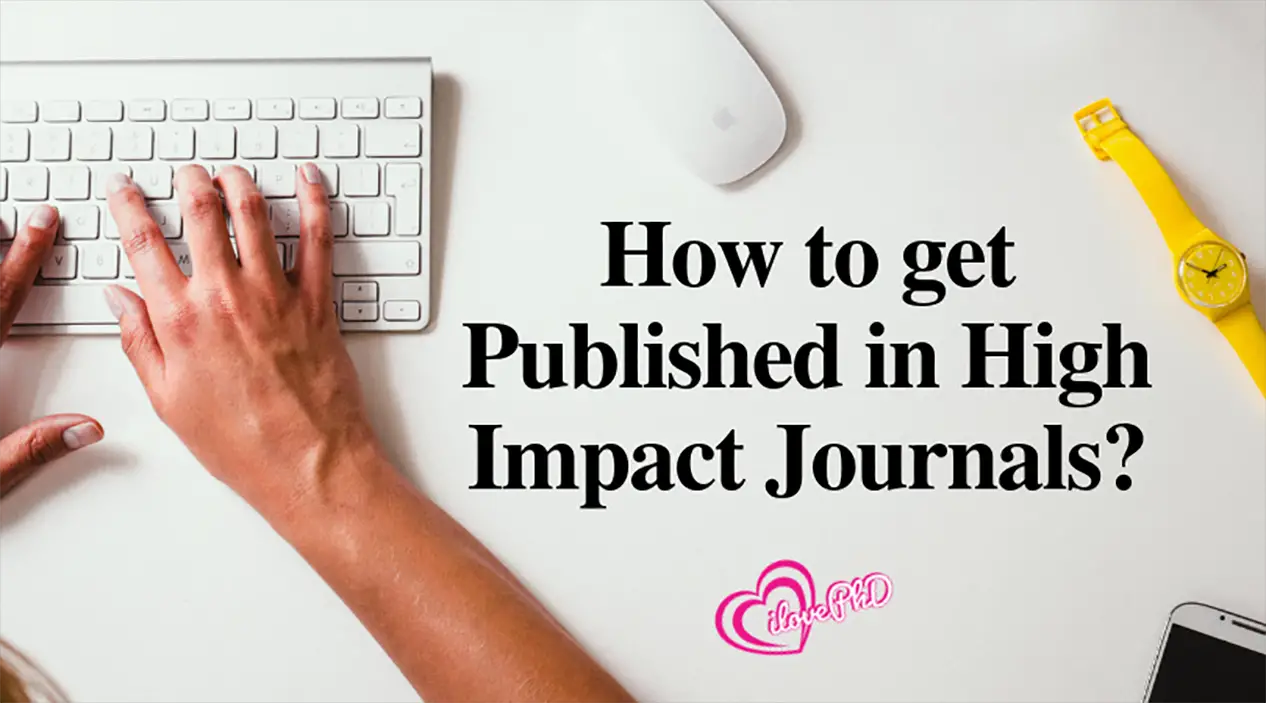Getting your research article published in high impact journals will give a boost to your academic life and future career. But, writing a paper for an identified high impact factor journal is not that simple. It requires good technical communication writing skill to easily explain your research findings to journal reviewers and editors. In this article, ilovephd provides 5 important tips to get your manuscript to publish in high impact journals.
Editors at top journals seek exceptional qualities in the manuscript with novelty and conceptual advancement. Also, the work must provide a significant step forward for the field and provide a new direction.
How to publish in high-impact journals for free?
1. Know your audience
You can’t force everyone to read whatever you write, and if you do not pitch your paper appropriately, you can reduce its potential impact.
The readership for a scientific paper is specialised, but you should never assume too much knowledge on readers’ parts.
This is particularly important in high impact journals, as one of the acceptance criteria is research with broad relevance. So, while your readers will likely be scientists, they will not all be experts in your field.
Tips for better communication:
- Read every sentence you written from a readers point of view.
- Assume that your reader is a layman, and write as easy as that makes your reader understand your idea very clearly.
- Always ask What? Why? and How? for each sentence you write.
- Ensure your paper not giving ambiguity to the reader in any dimension.
2. Imagine your research as telling a story
High-impact papers need strong evidence and noteworthy conclusions. So, start by asking a big research question, and form a logical argument.
Look to fill as many gaps in your story as possible. Great research builds up a whole picture of a system. A good research article is a clear and compelling story that to be written with a chosen scientific publication in mind.
Tips to get better flow
- Avoid overly technical or specialized jargon.
- Ensure the flow of reading from sentence to sentence, paragraph to paragraph, and chapter to chapter.
- Unnecessary punctuation can impede the flow.
- Explaining the steps involved in the scientific solutions/methodology will improve the flow of reading.
- Repetition of ideas or information can impede flow.
3. A strong title to get a paper publish in high impact journals
The paper’s title should be informative, telling the reader what the finding was. It should be clear and concise so that the reader can know what the paper is about.
Don’t underestimate the importance of a good title and abstract, these short blocks of text often the final consideration when constructing a paper will receive far more views than the paper itself. They should be used as a hook, to pull readers (and editors) in.
Don’t use specialised jargon, especially in the title and abstract to publish journals in high impact factor publications.
4. Clear abstract
The abstract is the second most important section. It should briefly introduce the topic, state the problem that the paper is trying to address, summarise the main findings and then give a perspective on possible benefits and utilities of these findings.
Tips for clear abstract writing
- The first few lines of abstract should provide a basic introduction to the field, followed by background on the questions or problems within the field.
- Adress a specific research question.
- The abstract should end with a conclusion or an answer to the question addressed, followed by an elaboration on the broader implication or impact of the finding.
- In the results section of the abstract, some details on the methods should be provided, but authors should seek to achieve a balance between too much and too little information.
5. Make good use of figures and tables
Figures must visually represent your findings and they must be in a logical order and correspond to your story.
Figures and tables (display items) are often the quickest way to communicate large amounts of complex information that would be complicated to explain in text.
High-quality display items give your work a professional appearance. Readers will assume that a professional-looking manuscript contains good quality science. Thus readers may be more likely to trust your results and your interpretation of those results.
Figures
Figures are ideal for presenting:
- Images
- Data plots
- Maps
- Schematics
All figures need to have a clear and concise legend caption to accompany them.
1. Images
Images help readers visualize the information you are trying to convey. Often, it is difficult to be sufficiently descriptive using words.
Images can help in achieving the accuracy needed for a scientific manuscript.
Tips for images, be sure to:
- Include scale bars
- Consider labelling important items
- Indicate the meaning of different colours and symbols used
2. Data plots
Data plots convey large quantities of data quickly. The goal is often to show a functional or statistical relationship between two or more items. However, details about the individual data points are often omitted to place emphasis on the relationship that is shown by the collection of points.
Tips for data plots, be sure to:
- Label all axes
- Specify units for quantities
- Label all curves and data sets
- Use a legible font size
3. Maps
Maps are important for putting fieldwork in the context of the location where it was performed.
A good map will help your reader understand how the site affects your study. Moreover, it will help other researchers reproduce your work or find other locations with similar properties.
Tips for maps, be sure to:
- Include latitude and longitude
- Include scale bars
- Label important items
- Consider adding a map legend
4. Schematics
Schematics help identify the key parts to a system or process. They should highlight only the key elements because adding unimportant items may clutter the image.
A schematic only includes the drawings the author chooses, offering a degree of flexibility not offered by images. They can also be used in situations where it is difficult or impossible to capture an image.
Tips for schematics, be sure to:
- Label key items
- Provide complementary explanations in the caption and main text
10 Simple Online Drawing Tools for Effective Thesis Diagrams
Related Article
Tables
Tables are a concise and effective way to present large amounts of data. You should design them carefully so that you clearly communicate your results to busy researchers.
Tips for well-designed table
- Clear and concise legend/caption
- Data divided into categories for clarity
- Units are provided
- Font type and size are legible
Hope, this article will help you to get your article to be published without paying in high impact factor free journals.
Happy manuscript submissions!
ilovephd
Courtesy: Nature.com



[…] with outstanding candidates with a recent PhD (<2years) and strong publication record in high-impact journals with an exceptional passion to advance precision diagnostics and targeted therapies for childhood […]
[…] How to get Published in High Impact Journals? […]
[…] Also Read: How to get Published in High Impact Journals? […]
Informative!!